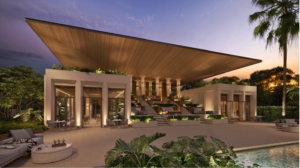
There was a period when having a house worth more than £1 million (currently about $1.186 million) in the British city signified something. Not any longer, though.
According to official government statistics from the United Kingdom, the typical price of selling property in London is £537,510 (about $637,200). However, owning a seven-figure home in the nation’s capital is becoming increasingly standard. The average selling price of a home in 41% of London’s 283 postcode areas was £1 million or more as of November 2022, according to data from the estate agency Hamptons.
In the two years between 2021 and 2022, six nearby ZIP codes each hit the $1 million mark. Former Victorian colonies coexist with second-tier communities benefiting from an influx of new residents from more affluent areas.
Born and reared in the nation’s capital, Alexander Bürk left for higher education in London in 1995. Since then, he and his family—wife Mia Bürk and their three kids, Andina, 12, and twins Lupo and Tiago, 10—have made Europe their permanent home.
The family relocated to west London in 2016 so everyone could be near Heathrow Airport and the school the kids would attend.
Cresco Real Estate is a development and investment company specializing in German real estate, and its CEO, Mr. Bürk, was also looking for a neighborhood with promising price increases. He explained that he was looking for a developing area rather than one already reaching its peak value.
They settled on the hopeful area of Acton, where new eateries, stores, and cafés had opened because of impending transportation upgrades.
The Bürks, a middle-aged couple, purchased a Victorian home with around 3,400 square feet in late 2016. The total expense of the house was approximately $2.964 million (around £2.5 million). The family decided to extend their home to around 5,000 square feet by renovating it extensively, starting with the cellar. Mr. Bürk proudly proclaimed, “We completely changed the whole house.” The only thing that hasn’t changed is the outward appearance.
Fast connections to the West End and London’s business area were made possible for Acton residents six years later with the opening of the Elizabeth Line on the London Underground.
Bethnal Green, East London
Even though the Germans heavily bombed the area during World War II, it was rebuilt with mostly low-grade social housing in the 1960s and 1970s, as reported in “A History of the County of Middlesex.” Today, almost 25% of local families are on a low income, according to the local Tower Hamlets Council.
However, as the cost of living in London continues to increase, a new group of young workers has made Bethnal Green their home. According to Sean Ward, sales manager at Winkworth Estate Agents, the property’s convenient proximity to London’s financial areas is a significant selling point. He claimed that in the past twenty years, the entire area of east London has become trendy thanks to the proliferation of restaurants, parties, and galleries. He claimed that property values had increased correspondingly.
West Ealing, West London
According to “A History of the County of Middlesex,” the contemporary history of West Ealing as a domestic neighborhood began in 1871 when a train station was constructed. New houses, stores, and eateries began to be developed around it.
All right, let’s jump ahead to modern times. The advent of the Elizabeth Line, another transportation invention, is primarily responsible for West Ealing’s entry into the $1 million-and-up housing group. Like neighboring Acton, West Ealing saw a spike in interest from homebuyers once construction started in 2009.








